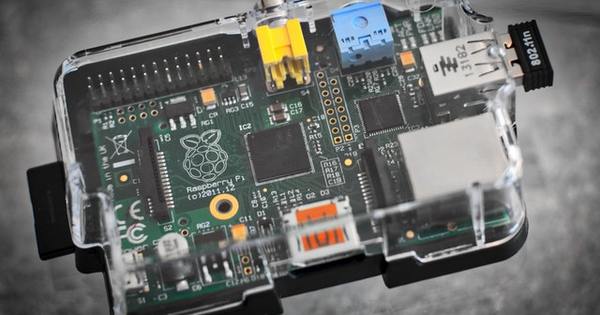Of course you want to use the internet possibilities of your smartphone or tablet at your holiday address, but not everywhere you have a WiFi network. Therefore, take a mobile router (mifi) with you on holiday, so you have internet everywhere in the car or at the campsite.
Tip 01: Mobile Router
When you are on the road, there are a number of options for connecting to the internet with your smartphone, tablet or laptop. The easiest option is to log into a free Wi-Fi network, but here you're generally limited to hotels, cafes, restaurants, or airports (and it's not exactly secure, either). Also read: 13 WiFi tips for maximum range on holiday.
In the Netherlands you can also consult the internet via your mobile provider with your smartphone and data bundle, but abroad this quickly becomes a costly affair. In Europe you have to deal with roaming costs, each downloaded megabyte is then charged separately by your Dutch provider, often at exorbitant rates. Outside the EU, the costs for mobile internet are much higher. Most providers do offer special data bundles that are aimed at holiday use, but here too the prices are often high.
If you want to access the internet with your tablet, it must accept a SIM card. You can't put a SIM card in laptops anyway and are generally only connected to a router via a WiFi or Ethernet connection. The solution for all these devices is to purchase a mobile route. There are several types of mobile routers available: some only function in places where you have a power outlet and physical Ethernet cable, others are suitable for fully mobile use. We concentrate here on the latter category. In this type of router, also called a mi-fi router, you insert a SIM card that is configured for mobile internet. The router connects to the internet via the SIM card and forwards it as a WiFi signal. This way you can simultaneously connect multiple devices to your mobile router via a normal WiFi connection.
Tip 02: Speed
One of the most important aspects when purchasing a mobile router is the speed, which is indicated as 3G or 4G/LTE. 3G stands for third generation and has a download speed of about five to ten Mbit/s, roughly comparable to a slower ADSL or cable internet connection. 4G (fourth generation) or LTE is a lot faster and theoretically goes up to about a thousand Mbit/s, but in practice the speed is more like 10 and 20 Mbit/s. The terms 4G and LTE are often used interchangeably, but LTE only refers to actual 4G speed.
The final speed also depends very much on where you use the router and whether you are standing still, or in a car or train. A 4G/LTE router is generally more expensive to purchase and using a SIM card that supports 4G/LTE is also more expensive than a SIM card that can only be used on the 3G network. It is also important that the network in the country where you want to use the mobile router is set to 4G. If you go on holiday to Bulgaria, for example, then a 4G router or SIM card is not of much use, since no 4G network is active here yet. Your router will work, but it will connect over a slower 2G or 3G connection. In the specifications of the router you can read what the maximum upload and download speeds are, a 3G router will often have a maximum download speed of 21 Mbit/s, but there are also 3G routers that, for example, have a download speed of 43 Mbit/s. offer.
NB
Almost all mobile routers create a WiFi network of a 3G or 4G signal via a SIM card that you can place yourself. Yet there are also routers where this is not immediately possible, here you can only connect a separate USB modem or separate USB dongle to the USB connection. These routers are often cheaper and it is not always clearly indicated in the description whether you can immediately put a SIM card in the router.
Tip 03: Choose a router
If you know whether you want to buy a 3G or 4G/LTE router, it's time to choose a router type. If you want to be able to carry the router in your pocket, handbag or backpack, the size is of course important. Some mobile routers also require a socket and are therefore only useful if you need an internet connection in a hotel, cafe or caravan. Often, the smaller the router, the shorter the battery life. In most cases, it is also the case that a 4G router consumes more power than a 3G router and will therefore be empty faster.
It is difficult to compare routers in this area one-to-one, partly because you have to rely on information from the manufacturer. What you can pay attention to is the power of the internal battery. This is indicated in mAh (milliampere hours), a higher number of mAh means the router's battery lasts longer. The most convenient is a router that you can quickly charge via a USB cable, some routers also supply adapter plugs for the car or for a normal socket. Typically, you can connect up to five devices to a mobile router at the same time, but some routers allow up to ten devices to connect simultaneously. The question is, of course, whether you need this during your vacation.
Tip 04: Specifications
In addition to the general tips, there are also some more specific things to look out for when purchasing a mobile router, one of which is which frequency band the router works on. This concerns the WiFi signal that is sent from the router to your smartphone, tablet or laptop. There are two bands: 2.4 GHz and 5 GHz. The 5GHz band is a newer band and offers a better WiFi connection between your smartphone, tablet or laptop and the router. However, not all older devices support the 5GHz band, so a router that broadcasts on both frequency bands is a smarter choice. Another designation you will find on a router box is 802.11. This is a protocol for transferring information over a Wi-Fi connection. 802.11 is always followed by one or two letters that indicate which version of the protocol is being used.
The very first standards were 802.11, 802.11a and 802.11b and are more than fifteen years old. Then 802.11g and 802.11n followed and since 2013 we have been dealing with 802.11ac. Each newer version has a greater range and can transfer data to your device in a faster way. In terms of security, it is necessary that you can secure your Wi-Fi network via WPA2. Some older routers only offer security through WEP, such security is easy to crack and therefore unauthorized persons have easy access to your WiFi network. Also check which frequencies the router supports, in the United States generally different frequency bands are used for 3G or 4G than in Europe. Most (web) stores indicate whether a mobile router is suitable for worldwide use. If not, ask or find out through the manufacturer's website.

